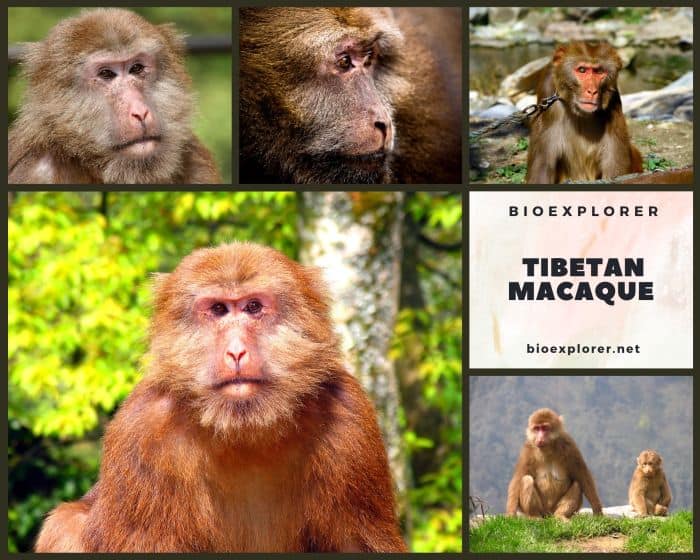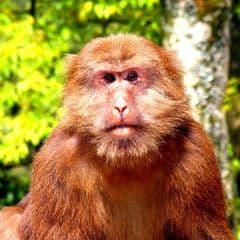
The Tibetan macaque[1] (Macaca thibetana), also called the Chinese stump-tailed macaqueor Milne Edwards macaque, is a macaque native to eastern Tibet, eastern Guangdong, and northern Shaanxi in China.

- Tibetan macaques are the largest of the macaques and have a strong, muscular build with dense fur that ranges in color from gray to brown.
- Their fur tends to lighten, even whiten, as they age. Children under two years old have much darker fur, primarily black, with white accents around the face and belly.
- They sport a lush beard and cheek hair that grows on their faces like sideburns or mustaches.
- Their faces are otherwise hairless, and coloration varies between sexes: females have paler faces that are reddish-pink, while males have paler, flesh-colored faces.
- Their eyes are large and dark brown, with expressive lids.
- One of the most notable features of this macaque species is its short tail, which has earned it the nickname “Chinese stump-tailed macaque“.





















